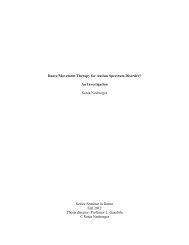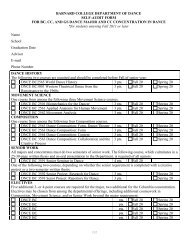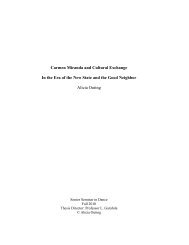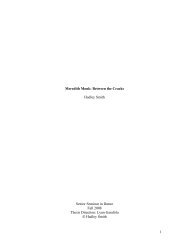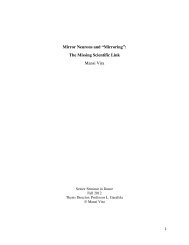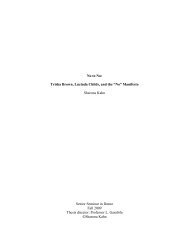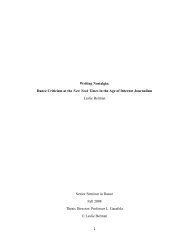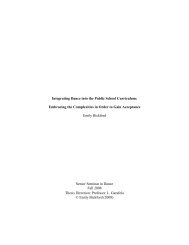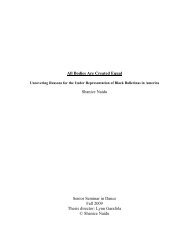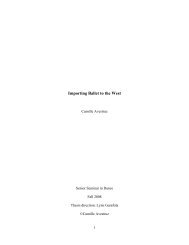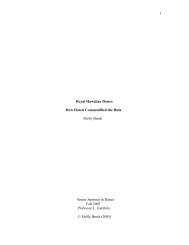You also want an ePaper? Increase the reach of your titles
YUMPU automatically turns print PDFs into web optimized ePapers that Google loves.
An analysis of Graham’s movement brings one closer to the subtleties of the work just as<br />
close readings of the poem and its words form an image of Helen. H.D.’s lyrical form and<br />
narrative become a reality like the movement-language Graham uses in her work, which allows<br />
the audience and those researching the work to see the centrality of Jocasta’s character. Carrie<br />
Ellmore-Tallistsch, the dancer I watched as Jocasta in March 2012, embodied the released and<br />
emotive movement language, and I could see the words with each stab of the arm and the plié of<br />
the knees. Even the pupils of her eyes seem to radiate power and emotion in each movement<br />
whether small or large. As Oedipus, Tadej Brdnik’s strength and emotional grace offered good<br />
contrast to Tallistsch’s emotionally charged presence. One particularly striking image was when<br />
Oedipus performed an arabesque penchee on the “bed” over Jocasta.<br />
Jocasta’s extensions and other expansive movements are images that suggest her turmoil. In<br />
H.D.’s poem, Helen’s anguished outbursts parallel these moments of strength and drama. At the<br />
beginning, Helen exudes a sense of confidence, even though she is uncertain—consistently<br />
maintaining the feeling of contradiction and conflict:<br />
I am a woman of pleasure,<br />
I spoke ironically into the night,<br />
for he had built me a fire,<br />
he, Achilles, piling brushwood,<br />
finding an old flint in his pouch,<br />
‘I thought I had lost that 56<br />
Helen may be conflicted, but the reader gains an understanding of her perspective on the figure<br />
of Achilles. Helen’s gaze and thoughts are emphasized just as Jocasta’s movements emphasize<br />
her love for Oedipus and admiration for his body. Rather than the male gaze referring to the<br />
female body, it is the female gaze on the male body that empowers. Her confidence in being a<br />
56 D.H., 12.<br />
25




